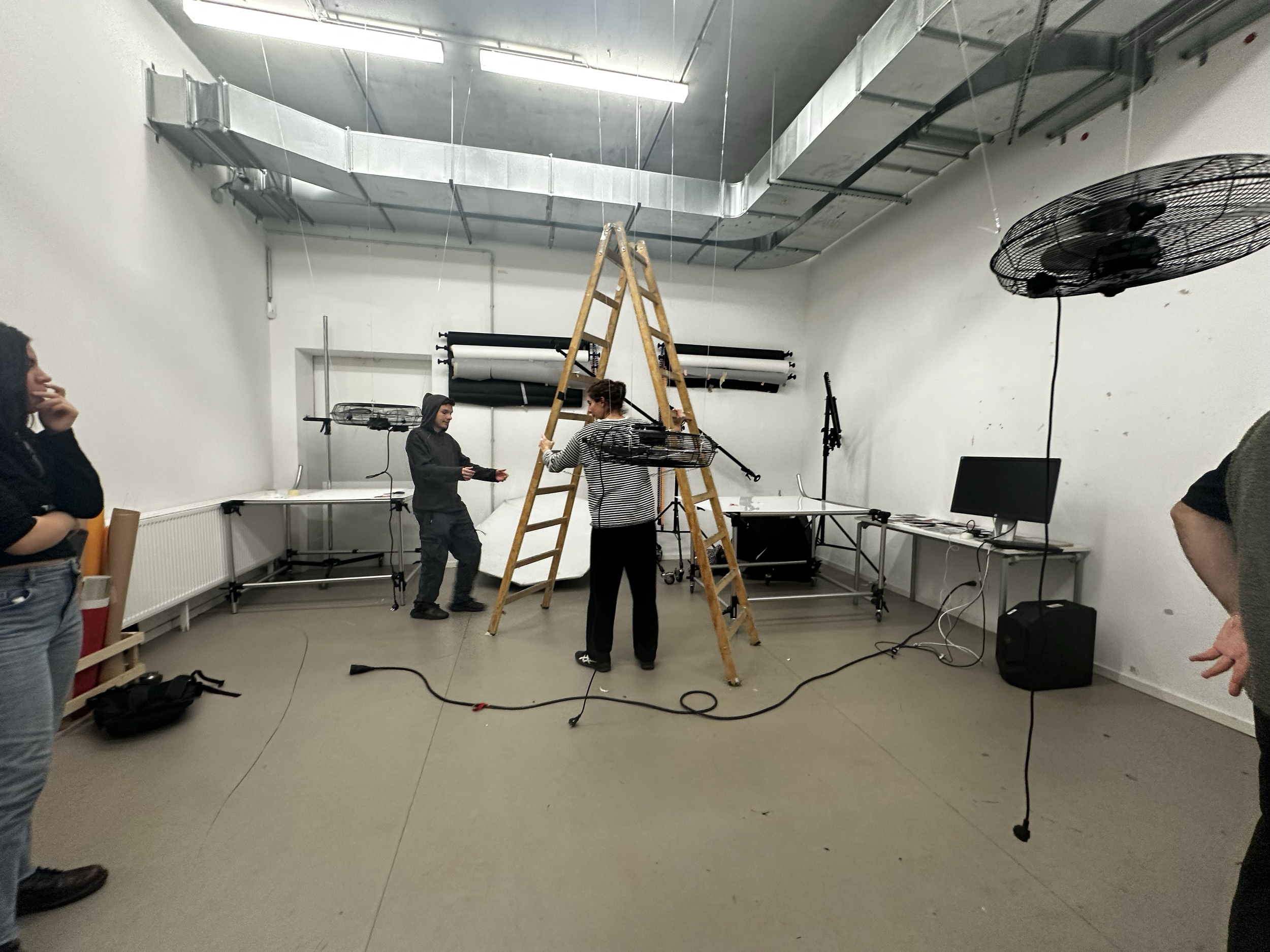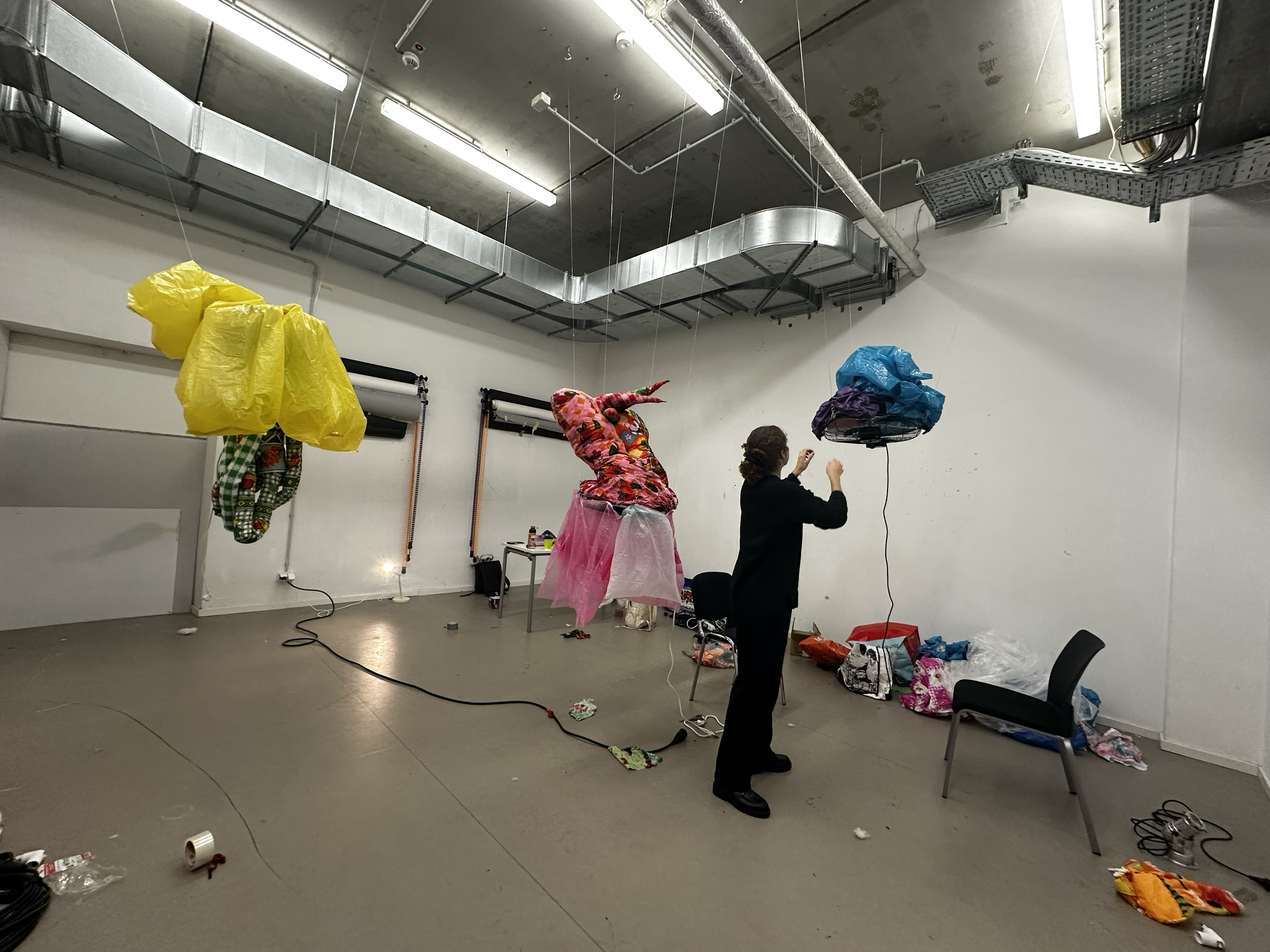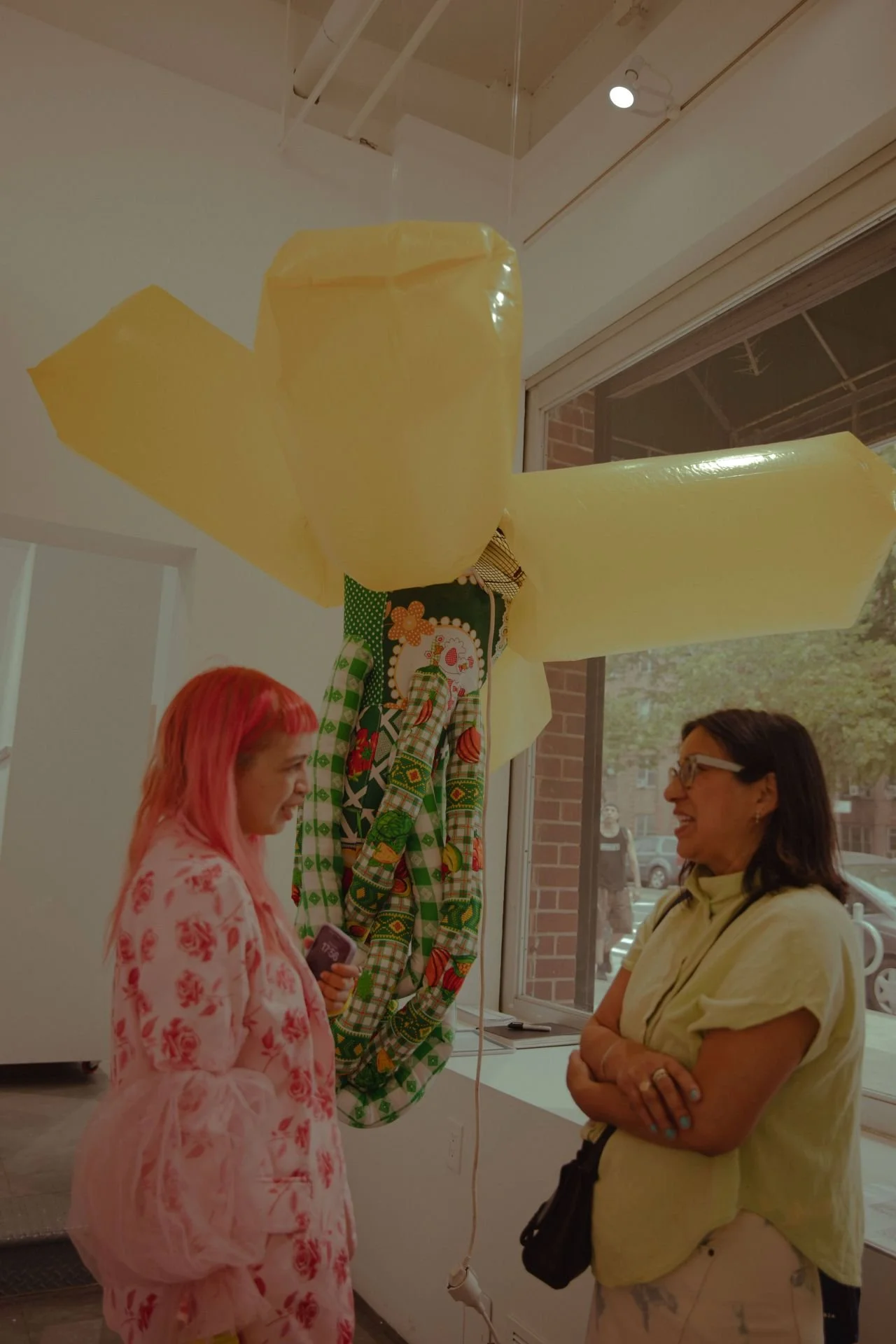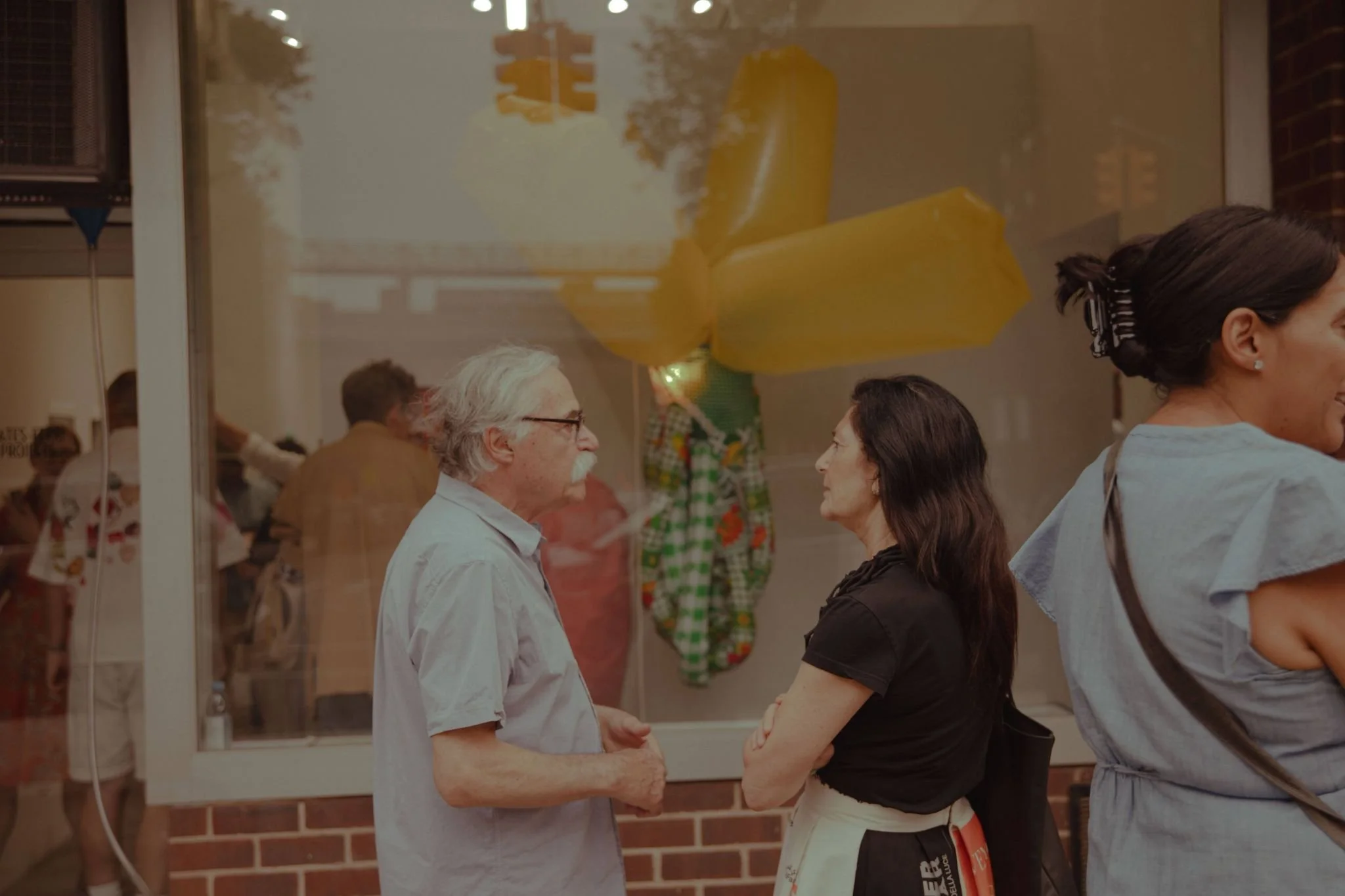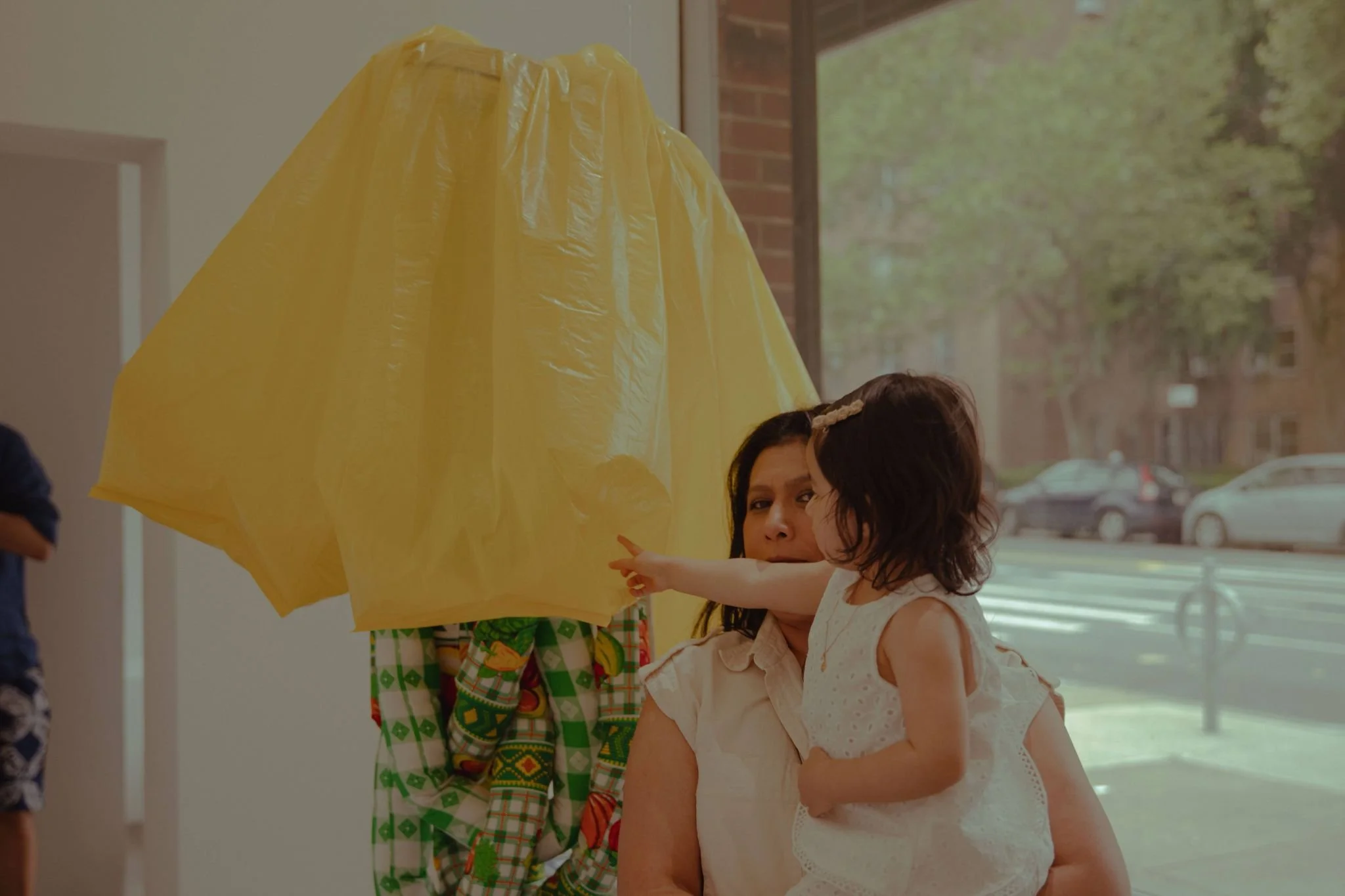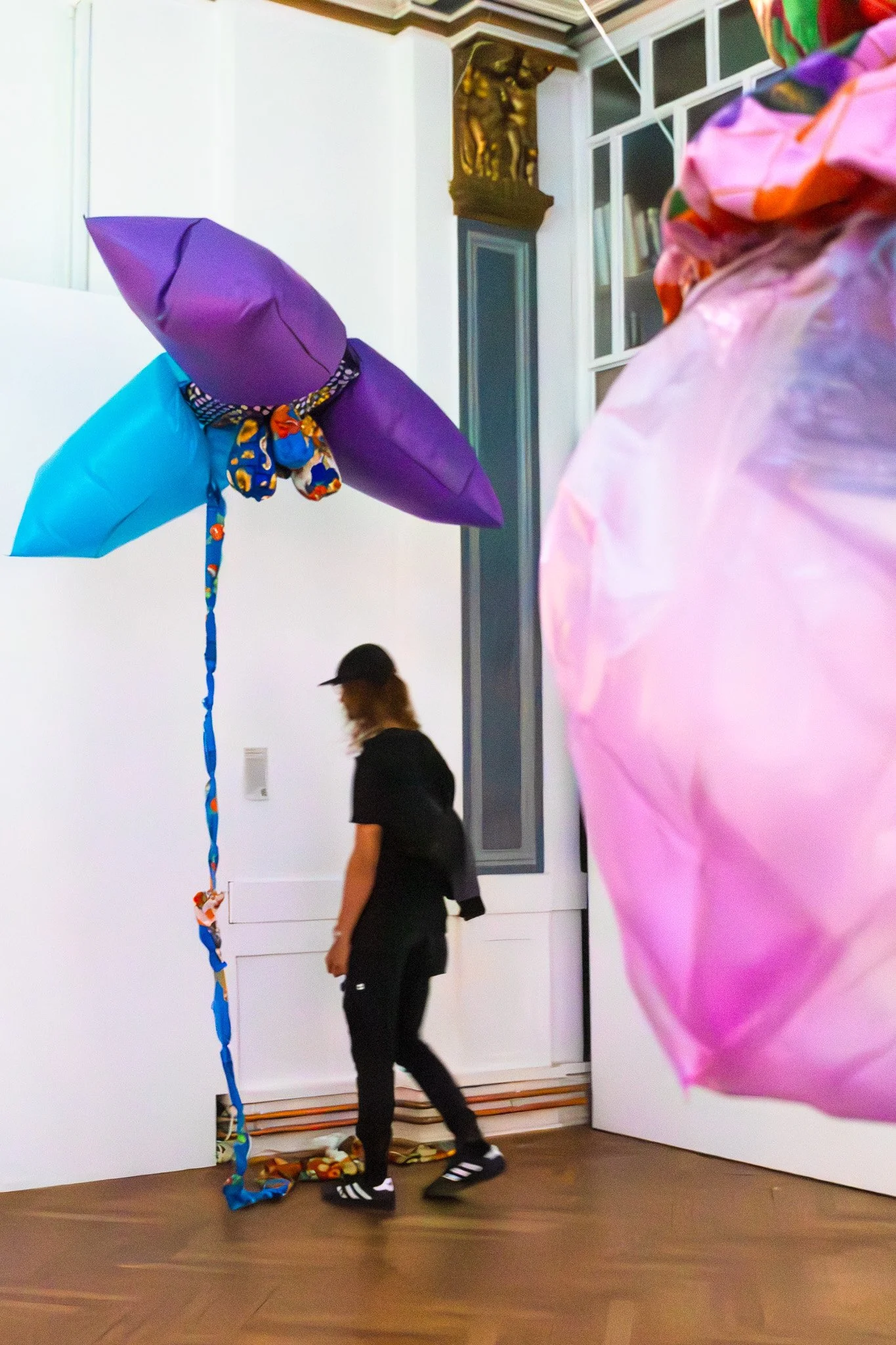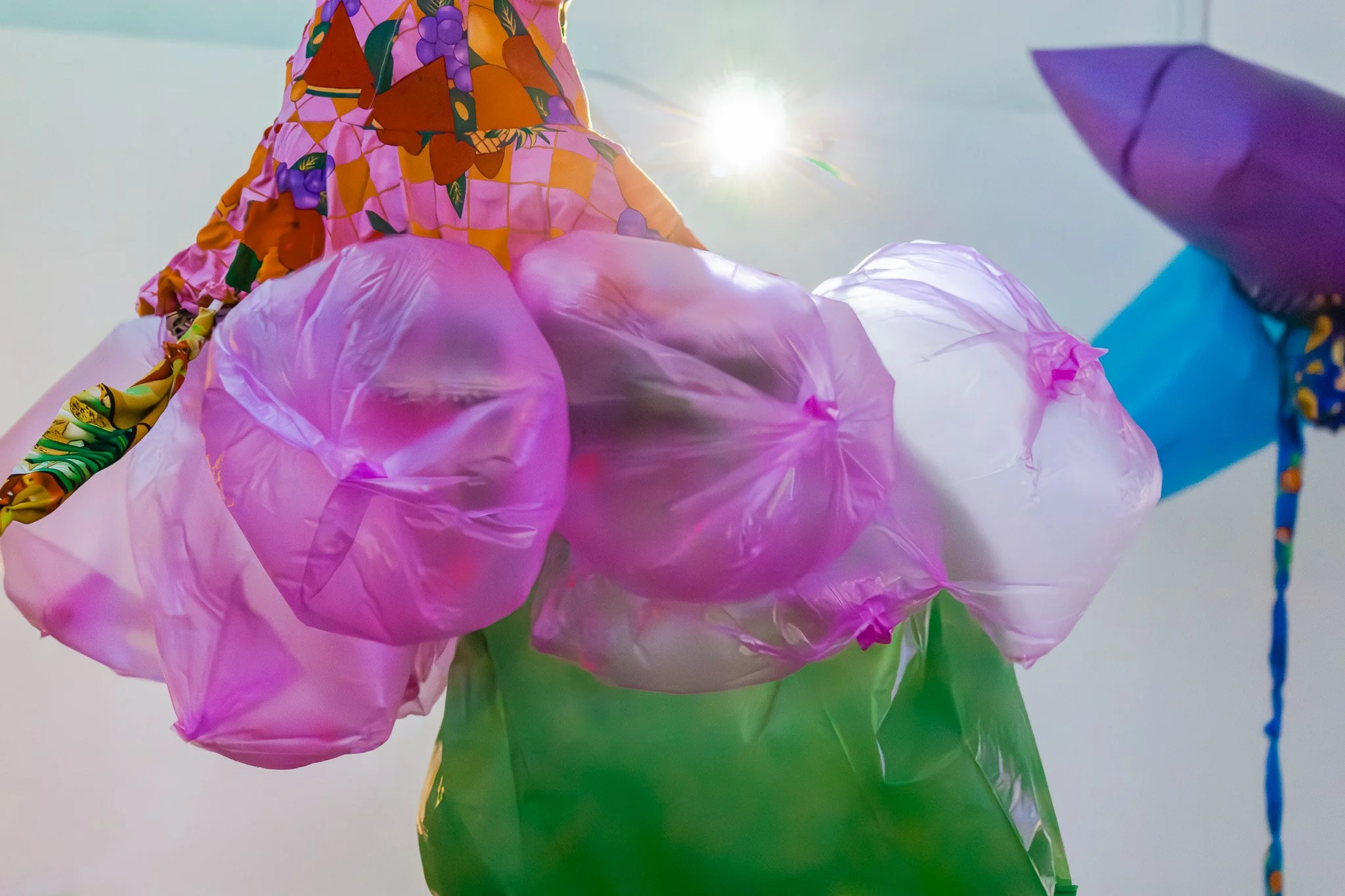Existiendo Excesivamente is based on the phenomena maximalist covers for appliances, toilets, and aprons that become everyday cultural objects in El Salvador but are rejected and looked down upon. Questioning the idea of aesthetic taste, perception, and how it relates to other social aspects rejected, including queerness, Indigenous culture, colorism, classism, and the effects of imperialism and colonialism and the quickly moving gentrification, focusing on El Salvador, but also seen in other cultures.
This aesthetic of excess and mismatched elements comes from a mixed culture colonialized and with the influence of many, especially the US, that leads to an aesthetic and social perception where deviations of these specific elements are rejected. As this research and project were being developed, street sellers were displaced more than ever; historical community areas were eliminated, and art and freedom of speech were censored. Gentrifying the main commercial area of San Salvador, removing elements that seem unattractive to international investors, creating uncomfortable cleanliness that is disconnected from the locals, and creating a more significant social divide, demolishing buildings in the area to create white and metal structures.
Through time, more of these elements of electro-domestic coverings, as well as the vernacular and popular elements they represent, that make up this mixed culture are seen less as the places are lost and the aesthetic is lost. The project aims to amplify these maximalist aesthetics, creating volumes with fabrics used in mercados in coverings, all materials bought in the areas that still make and sell these elements and materials to fabricate them, the fabric elements fabricated in collaboration in San Salvador to put together with the New Media parts put together in Berlin. The volumes are abstract shapes creating a color scheme with mismatched printed fabric; from a personal standpoint, the shapes are based on the region’s flowers, fruits, and mixed traditions. They create a composition that inflates, deflates, and dims lights brighter as the shapes take up space that isn’t given to marginalized communities.


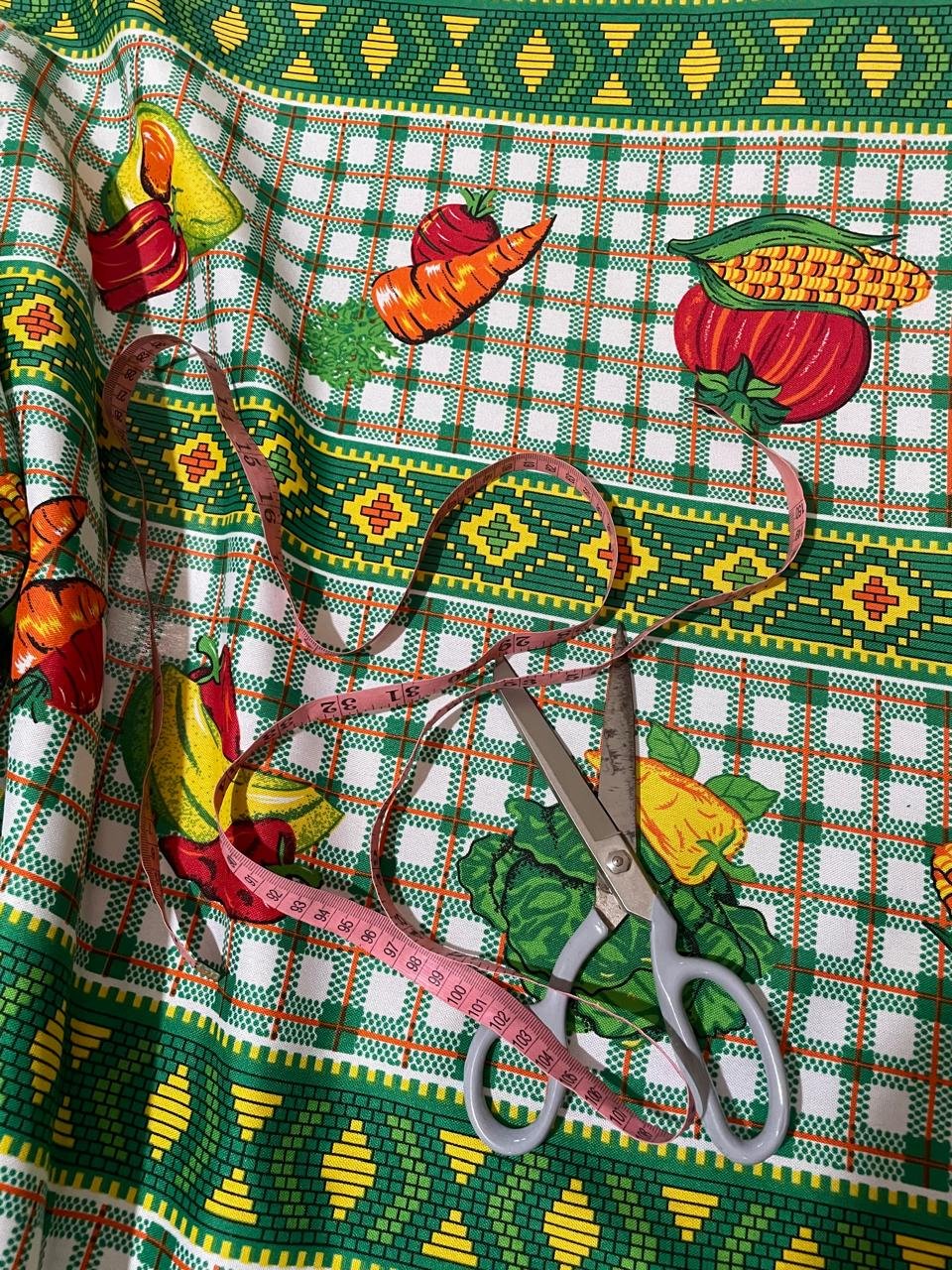
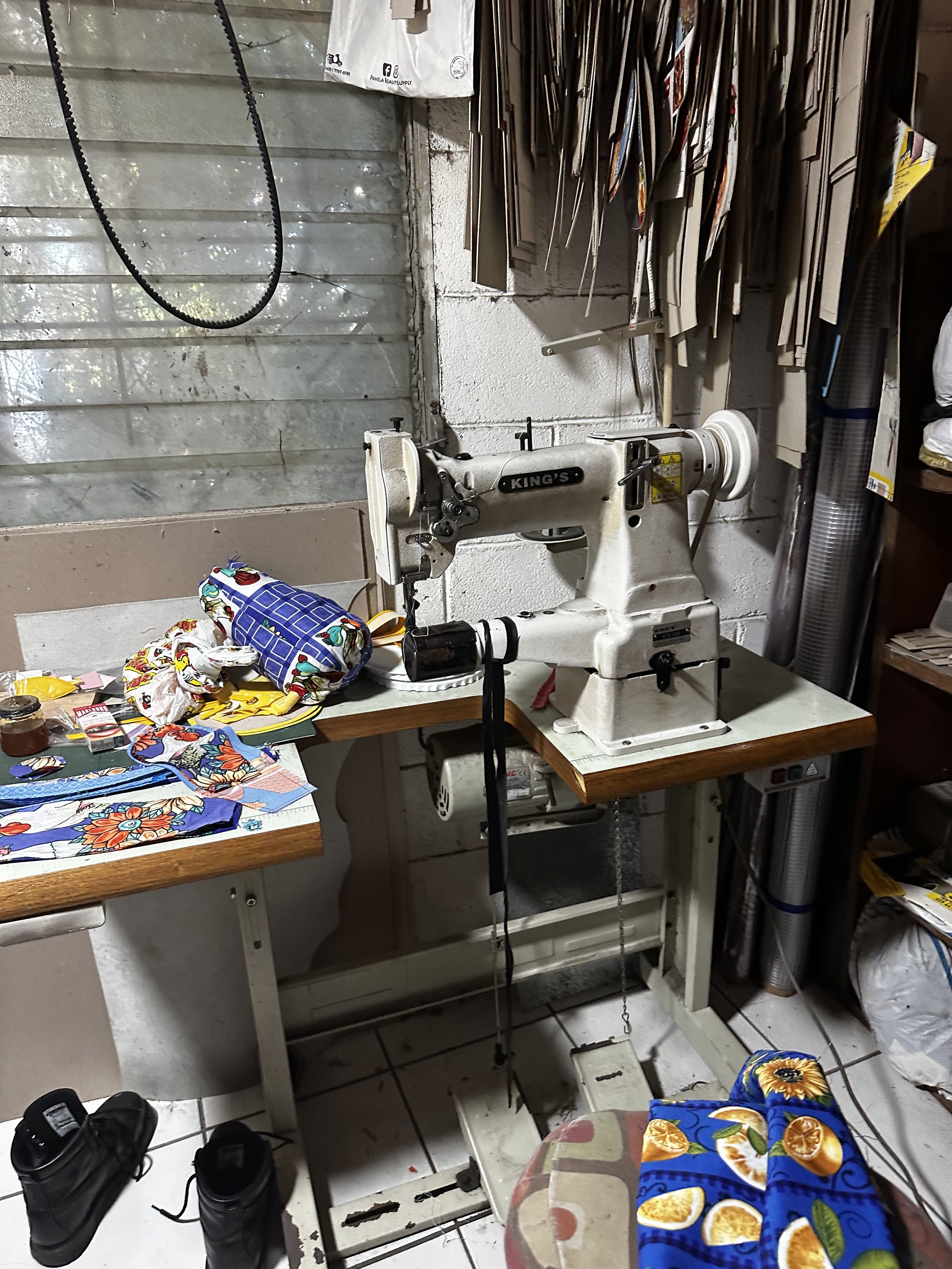
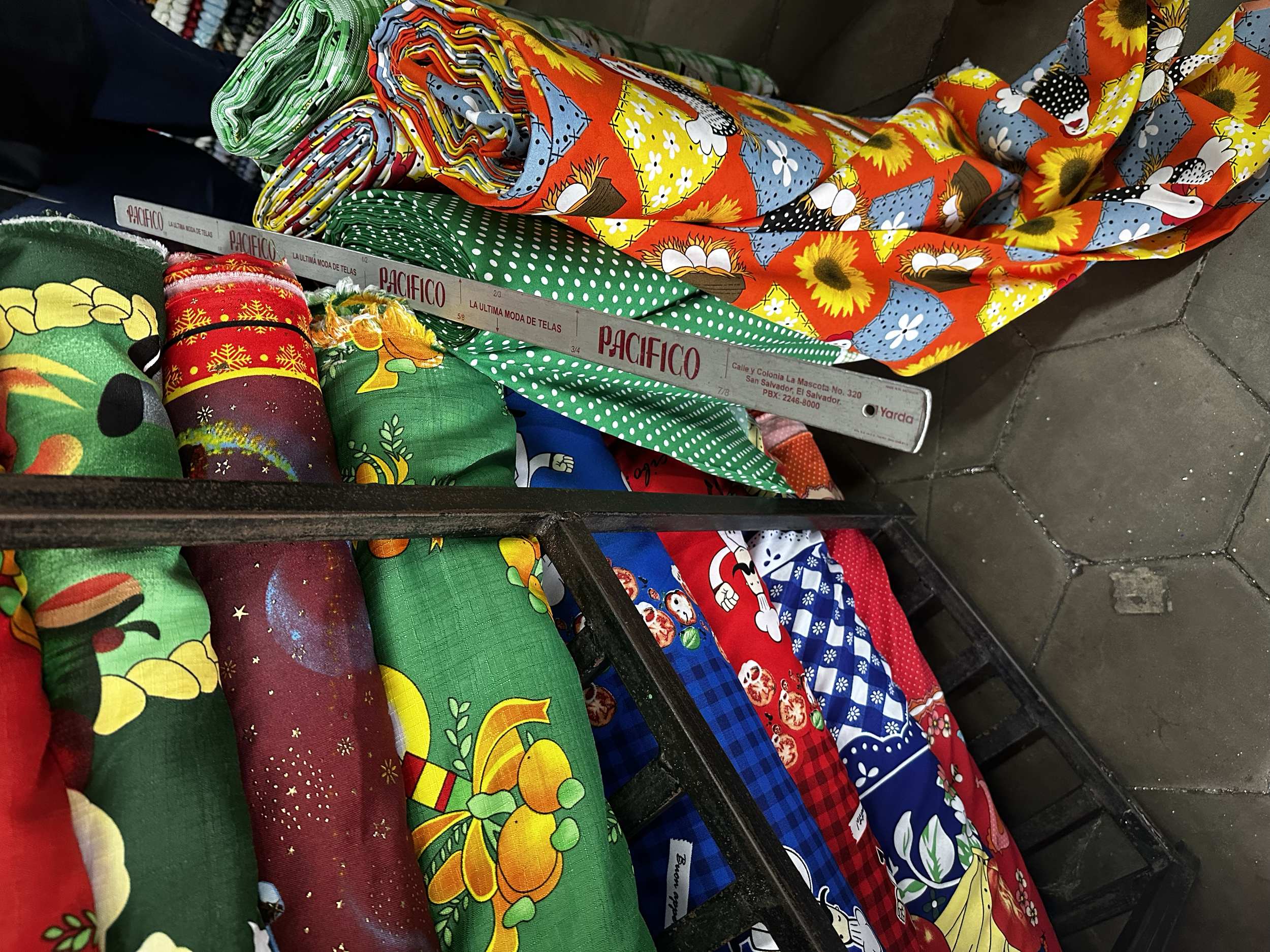
The fabric volumes were designed specifically for the project. The materials were bought at Mercado Central, San Salvador, where fabrics, ribbons, and all the materials for the coverings are sold as well as the materials. The fabrics were separated into colors, creating a bricolage, but I thought of mixing colors and fabrics, merging the style of the fabrics and coverings, based on empirical designs and my background in product design. The shapes were sketched, then prototyped on paper and fabric. Each piece was hand-cut and sown by the Martania Bags team, including Manuel Lopez, Paty Portillo, Tita Quintanilla de Torres, and me, Marta Torres.
Exhibition in Kates-Ferri Projects New York City, USA



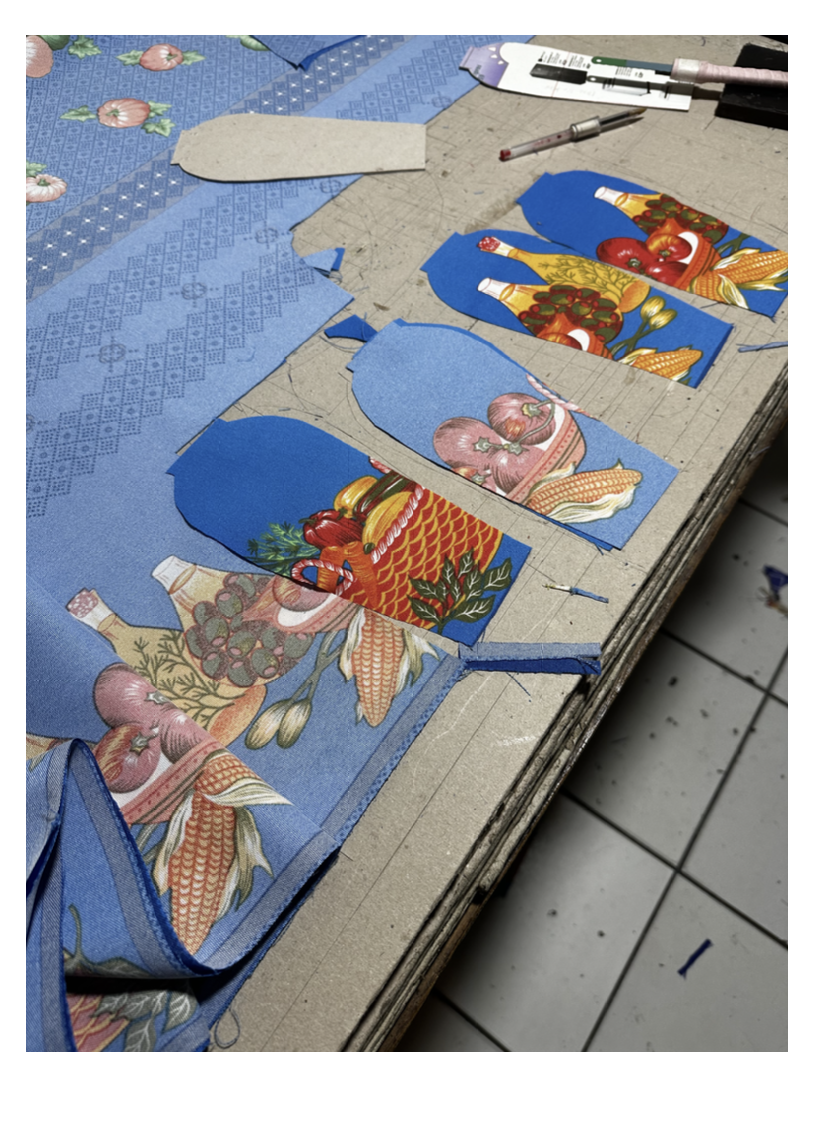
Exhibition in Prachstaal Berlin, Germany
The three volumes created in the composition are abstractions of elements of El Salvador. Working with organic shapes, it aims to enhance the contrast between technology and nature. The organic shapes are based on the country's three organic and vegetation elements. The first one is the tradition of Las Palmas, which is by itself a mixed tradition. Semana Santa, the holy week of the Catholic religion, is mixed with indigenous elements and the region's fauna. Locals make decorations by drying palm leaves and making them into shapes for the celebrations. The first volume has an interpretation of that growing from a blender covering. Although this is an explanation of the shapes, it’s not intended for the audience to understand as a direct reference or recognize the starting point, but more blending the organic shapes in this composition made out of printed bright fabrics, used for the phenomena, bought in place.
The three volumes combine this bricolage of fabric and mixed textures while joining them together through color and patterns and creating maximalist but thought-out pieces combining different elements of the research, what they represent, and thought-out volume design and design anthropology.
The second shape is a playful interpretation of an Anthurium that is often seen in tropical countries. The scales are more playful, and the number of elements doesn’t match; it becomes an abstraction that ultimately is viewed more into the bigger shape, bigger composition, and focusing on the bold fabrics, every element becoming a part of this world-building.
The third shape comes directly from papayas, how they grow on trees in groups, and how many round fruits are sold by street sellers and in the markets, like carrots, oranges, and tomatoes, often joined together by plastic; this can be seen In the documentation of the beginning research. This repetition of elements is made out of two-sized modules that join in shape and become part of the greater world.
The project sought to enhance these fabrics and give a different perspective on electro-domestic appliance coverings without being too literal, designing my own shapes for them and ultimately them being amplified and at the same time covering the fans, most of the technology again being coverings and uncovering the maximalism of these.

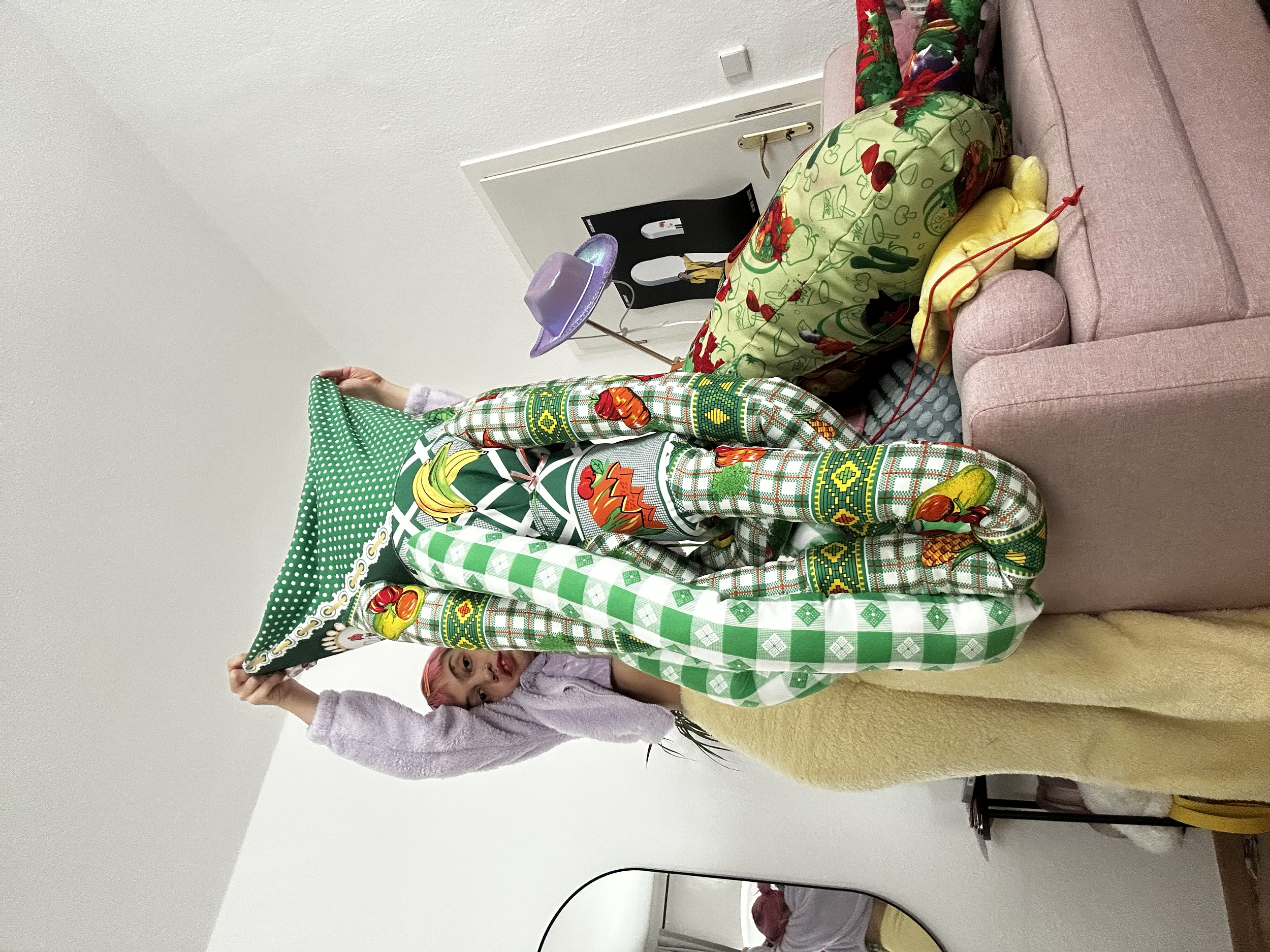



The three shapes, the Semana Santa Palmas, The Anthurium, and the Papaya repetition, were made in El Salvador in December 2024 and then tested with ventilators, movement, and scales for composition in Berlin.
Testing different fans, materials, and how the materials interact and respond to air from ventilators. Different experiments were made with different fans, seeing the power it would need and what materials could close off to air. With these different plastics, fabric textures were tested, and fan sizes and power to get to the appropriate materials and equipment for the installation.
Amplifying variations
With testing different materials, the fabric volumes stayed constant for the project. Still, static by filling them with a synthetic padding, the same type of material used to protect appliances in the phenomena, and through a learning curve, plastic had to be used. Different experiments were conducted to create the final shapes that would inflate and deflate through DMX and touch designer, as well as the lighting accompanying this movement.
With these adaptions, the key elements were kept: the fabric, uplifting, amplification, and bricolage that covers, the ventilators that create the movement, and the lightbulbs—ultimately becoming my own interpretation of designed and fabricated technology coverings. The project went through different phases of trial and error, even in the plastic stage, to have different inflations, some more controlled, some more expanding, and keeping with the color palette of the fabric volumes of the phenomena, creating three cohesive sculptures that become a moving spatial installation.
An important element for the installation and volumes were the fabrics. The fabrics used are usually used for electro-domestic coverings in El Salvador; they were bought in the same places the research is based on, with local sellers and where makers buy for the specific elements. When buying the fabrics, towards December, there was a change in the fabric in that there were also Christmas motifs, but for the project, the general floral, food, and fruit patterns were bought and used. Even though the project is based on maximalism and camp, I also wanted to curate the elements to create the specific installation. This meant also thinking about color, so when buying the fabrics, the use of materials responded to what they had but focused on some color palettes for some pieces, as it’s also empirically done with the shapes analyzed. I bought greens in different patterns with themes of checkerboards, fruits, vegetables, and corn that also reflected the region. I wanted to maintain the elements of fabric by giving it my own twist and color palette with what I had available in the area; the second piece was based on oranges, pink, and red with different patterns stitched together, making this bricolage of mixed cultures and aesthetics all joined together in the Anthurium, for this specific volume I also hand dyed a part of it in a way that I would make it pink in some parts but focusing on maintaining the pattern and just uplifting and giving a little twist to what was there. The dye was also bought in the area and is mainly used for other practices. Still, in this case, it was used to make a more specific color palette while maintaining the authenticity of the prints and keeping other general patterns within the same shape. In this and other ways, giving my own style, gaze and artistic practice while amplifying the abstracted elements of the research. The last shape, the papayas, were in different prints of blue. As seen in the pictures, all the fabrics were organized according to color, and then the designs were adapted to them.
Installation Documentation

